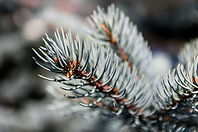Gunpowder Park was formally a munitions testing range owned by the MOD, before being transformed and landscaped into a country park in 2004.
Gunpowder Park and Sewardstone Marsh are an ideal place for walkers and cyclists, with a comprehensive network of surfaced paths accessible in all weathers. There is also a permissive bridleway for summer use circling the arable farm fields that border the parks.
By the main entrance, the large area of grassland in front of the building is maintained for games and picnicking. Adjacent to this area, lies Black Ditch which provides an invaluable habitat for Reed Warbler in the summer months and waterfowl all year round. This stretch of water then feeds into the River Lea Flood Relief Channel.
Much of the park is grassland and the different meadows are cut on rotation. They display a wide variety of colours throughout the year and are dissected by lines of Aspen and Birch trees.
In the middle of the park is Osier Marsh, where a boardwalk runs through a wet woodland abundant with ferns, lichens and willow trees. Two bird hides in this area look out over two seasonal pools. Osier is a type of willow which with other willow species, thrive in this wet environment.
The Greenwich Meridian Line runs through the land, where there is a viewpoint on a hill overlooking the park and parts of Epping Forest.
In the far southwest corner of the park are Knights Pits and Sewardstone Marsh, where grass paths wind through old gravel pits and wet woodland. A former fishing lake is here as well, which has been left undisturbed for wildlife to flourish.








.png)










%20(1).jpg)






.jpg)
.jpg)
.jpg)